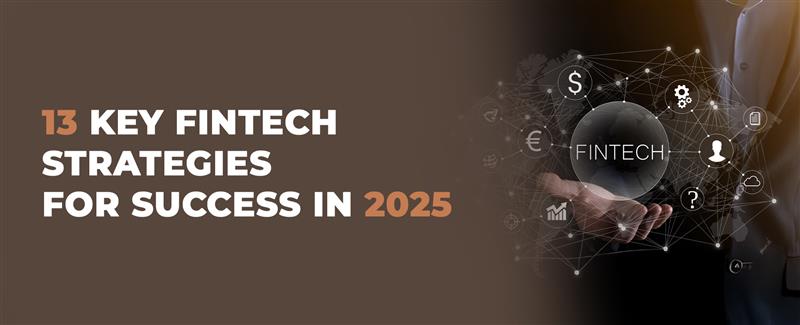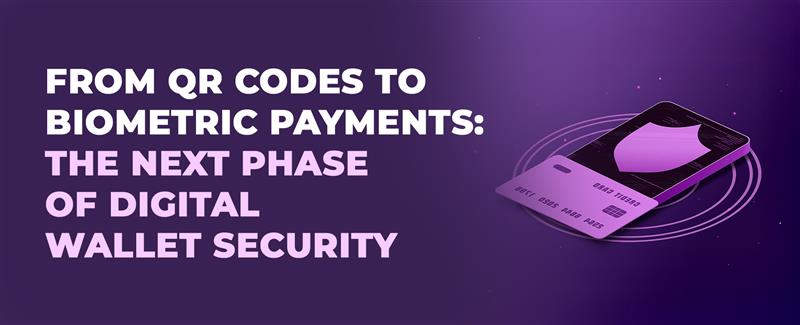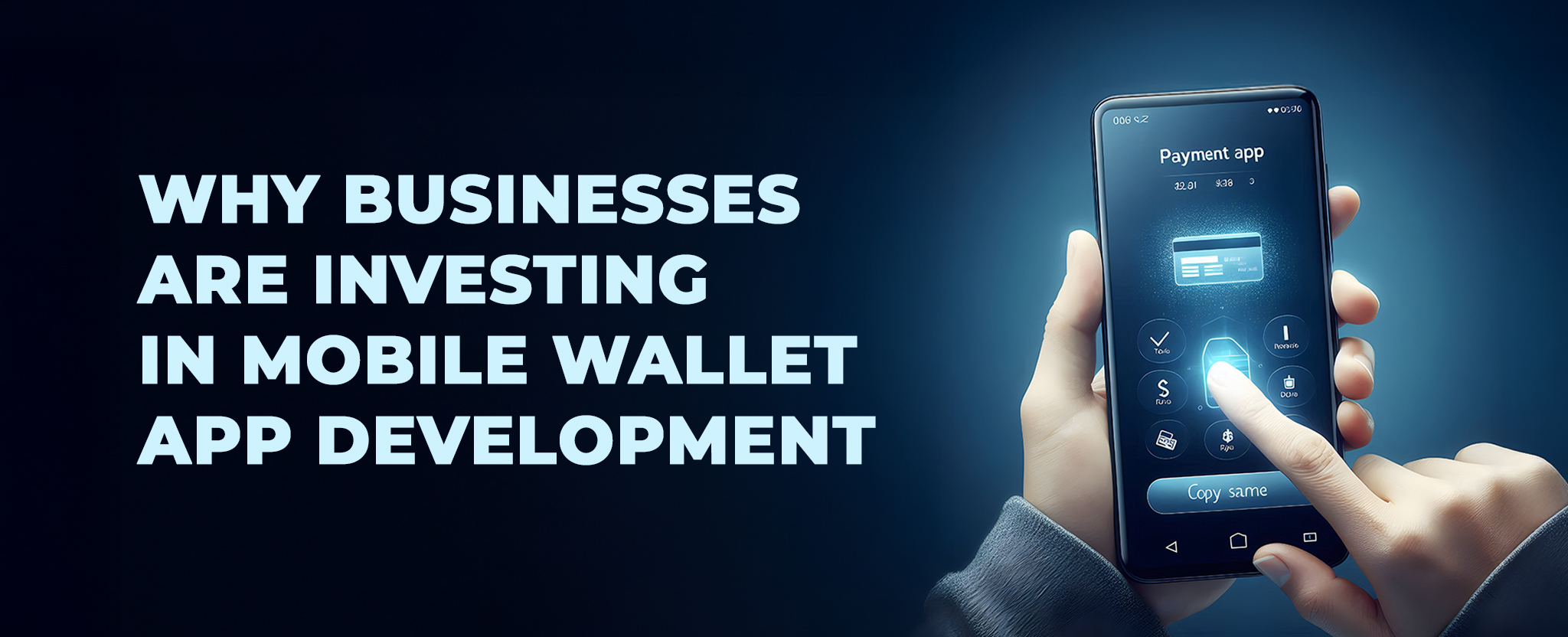13 Key Fintech Strategies for Success in 2025
16 Jan 25 


Did you know that fintech has given rise to 162 companies valued at over $1 billion? With global demand for fintech apps surging by 132%, the industry is more competitive than ever. Fintech companies are racing to grab the biggest slice of the financial market, and the stakes are high. In just the first quarter of 2021, marketers in the fintech space spent a staggering $1.2 billion on user acquisition alone.
However, marketing fintech apps is challenging, as users often switch to competitors offering better rewards. In 2019, fintech apps faced a 35.5% uninstall rate, causing significant losses. This drives marketers to focus on strategies that retain and convert users effectively.
What Is Fintech Marketing?
Fintech marketing involves strategies to attract customers in the financial technology sector. Like other industries, it relies heavily on building trust and credibility. However, marketing fintech apps can be challenging since most people see finance as a necessary but boring part of life.
The complexity of financial technology, with its technical terms and conditions, makes it harder for average consumers to understand. This pushes marketers to find creative ways to explain their services simply.
Also read How to Design a Fintech Application: A Step-by-Step Approach
The Importance of Marketing for Fintech Companies
A great fintech solution needs strong marketing to succeed:
- Brand Awareness: In a crowded fintech market, branding helps startups stand out. Marketing delivers consistent messages across platforms to build trust.
- Attracting New Customers: Marketing helps potential customers discover your solution and understand its benefits through targeted ads, educational content, and user testimonials.
- Enhancing Customer Engagement: Beyond acquisition, marketing nurtures existing customers through valuable content and community building, fostering loyalty.
13 Most Effective Fintech Marketing Strategies
1. Create a mobile-friendly website
With over 6 billion smartphone users spending five hours daily on their devices, a mobile-friendly website is crucial. Fintech apps make financial services like banking and payments more accessible on phones. Your website must work smoothly on mobile devices before investing in other marketing strategies. Poor mobile experience can drive customers to competitors.
To simplify this process and quickly create optimized websites, an AI website generator can be used to design responsive, user-friendly pages that cater to mobile users while aligning with your brand’s goals.
Benefits of a mobile-friendly website:
Increases market competitiveness as all fintech apps now have mobile-optimized websites. For a mobile product, having a mobile-friendly site is essential to stay competitive in the industry.
Improves search visibility since 52% of searches happen on mobile devices, with Google favoring mobile-friendly sites in search results. A non-mobile-friendly site reduces chances of ranking higher.
Provides easy customer access as most fintech users are comfortable with smartphones and likely to research companies on mobile devices.
Tips for Creating a Mobile-Friendly Site:
- Use concise text with large fonts and engaging visuals due to limited screen space
- Remove popups and unnecessary widgets that affect navigation
- Optimize loading speed by eliminating excess elements and using compressed media files
- Design clear, clickable call-to-action buttons
2. Educate your customers
Financial education builds customer loyalty. While over 50% of millennials use payment apps, only 20% are financially literate. This presents an opportunity to educate your largest target market.
Educational marketing helps customers maximize your app’s value, encourage referrals, and build loyalty by positioning you as a financial partner.
Ways to educate customers:
- Create short videos for social platforms explaining complex topics
- Publish informative blogs as helpful financial guides
- Design shareable visual guides explaining financial concepts and processes step-by-step
3. Utilize gamification techniques
Customer engagement is vital for fintech companies to differentiate themselves and keep customers. Gamification has proven effective for many fintech apps by incorporating game elements that reward specific actions.
This strategy uses quizzes, puzzles, and contests to test financial knowledge, while awarding badges for tasks like transactions and bill payments. It particularly appeals to younger customers who prefer an entertaining approach to routine financial tasks, making financial education more engaging.
Benefits of Gamification Strategies:
- Promotes regular interaction. Users frequently return to your app for recurring financial needs instead of exploring alternatives.
- Drives higher conversions. Regular app usage increases the likelihood of desired actions and paid conversions.
- Builds brand awareness. Users share achievements socially, while regular engagement maintains excitement about reaching new rewards.
- Creates an approachable image. Gamification helps soften the serious perception of fintech brands.
4. Take advantage of social media marketing
Social Media Marketing
Social media is essential for fintech marketing today. While many financial institutions use it conventionally, the right strategy can yield significant benefits.
Each platform requires a unique approach. Though Instagram and Facebook enable cross-posting, user engagement differs between them. Similarly, YouTube and TikTok serve different video content preferences. Understanding these distinctions helps create platform-specific content that resonates.
How to Use Social Media for Fintech Marketing
Identify your target audience and their preferred platforms. Each social media platform has distinct user demographics – TikTok attracts Gen Z, while LinkedIn caters to professionals. Align your strategy with the platform that best reaches your target market.
Focus on building genuine community connections. Social media should facilitate two-way communication between your company and audience. Share relevant company updates and industry insights while actively responding to customer feedback, both positive and negative.
Maintain consistency in your messaging. Sporadic posts won’t help build community or visibility. Social platforms prioritize relevant content through algorithms, and inconsistent efforts will reduce your visibility among thousands of competing brands.
Start with mastering one platform before expanding. Develop a solid strategy and understanding of one platform before adding others. This approach helps maximize reach while preventing burnout from managing multiple platforms.
5. Marketing automation for fintech companies
Marketing automation
Marketing automation uses software to streamline repetitive tasks and boost efficiency while delivering personalized messages across channels. This improves accuracy and reduces human error.
Advantages of marketing automation in fintech:
- Saving Time and Resources. Automates routine tasks like welcome emails and social posts, letting teams focus on product development and strategy.
- Lead Nurturing. AI-powered email sequences engage potential customers based on their actions.
- Scalability. Enables personalized mass marketing campaigns efficiently.
- Enhanced Analytics. Tracks key metrics like open rates and conversions for optimization.
6. Don’t underestimate SEO
Fintech SEO
SEO (search engine optimization) remains a proven digital marketing strategy for fintech companies. It involves optimizing your website with relevant keywords and improving technical aspects like page speed, mobile responsiveness, and quality backlinks.
Related Content: The Complete Guide to SEO for Financial Services
SEO drives organic traffic by helping visitors find your content naturally, without paid ads. This creates lasting ROI as relevant content continues generating leads and sales. Partnering with a Perth SEO agency can further amplify your efforts, ensuring your website ranks higher and attracts the right audience.
Benefits of SEO marketing:
- SEO builds consumer trust. Financial services need customer trust. A well-optimized website following SEO best practices signals credibility and professionalism in handling sensitive data.
- SEO targets buyer journey stages. Financial customers seek specific solutions. SEO ensures your site appears when they search for answers.
- SEO provides consistent leads. Search engines index and display your fintech content as long as it matches search intent. Evergreen content addressing core financial topics maintains rankings.
- SEO encourages partnerships. Building backlinks requires collaboration with industry experts like finance publications and bloggers.
Also read Top 9 Fintech Mobile App Trends In 2025
7. Consistently create quality content
Quality content drives successful SEO. Build trust through consistent, valuable content that addresses customer needs with factual, in-depth information.
Move beyond basic tips to create thoroughly researched articles that stand out. Focus on solving specific customer problems rather than producing content just for search rankings. Your content should offer unique insights while maintaining accuracy and relevance.
Make your content accessible and easy to digest. Avoid jargon and complex terms while maintaining depth and research quality. Balance practicality with comprehensiveness.
Importance of Good Quality Content:
- Boosts organic SEO. High-quality content targeting relevant keywords helps achieve first-page rankings. Search engines measure quality through metrics like time on page. Users stay longer on pages with valuable information, signaling quality to search engines.
- Establishes thought leadership. Regular quality content demonstrates your fintech expertise. This is crucial in finance where trust depends on proven industry knowledge and ability to address customer needs effectively.
- Builds credibility. Quality content reflects your brand value and products. Thoughtful content creation shows customer care and validates your solutions.
- Grows customer loyalty. Valuable content serves as a lasting resource customers can reference and share, especially helpful for fintech services.
8. Use engaging advertising campaigns
Types-of-advertising-campaigns
While traditional TV and radio remain relevant, digital ads offer key advantages. Google, YouTube, and Facebook ads provide precise targeting and cost efficiency.
Benefits of digital ads for fintech:
- Targeted reach. Digital platforms enable demographic targeting with tailored messaging, unlike broad traditional media.
- Cost control. Digital advertising allows precise budget setting and ROI tracking. Real-time optimization and scalable spending provide flexibility based on resources.
Wider reach. Digital platforms help you connect with customers globally. Create targeted banking ads based on location, interests, behavior, and preferences to reach the right audience effectively.
Increased engagement. Unlike traditional media, digital ads enable direct interaction. Customers can ask questions, download resources, and participate in content directly through ads, leading to better conversion rates.
9. Explore affiliate and influencer marketing
Affiliate and Influencer Marketing
Third-party channels like influencers and affiliates quickly build awareness for fintech apps by reaching targeted audiences. Most fintech companies use affiliate marketing, paying commissions for successful leads. Referral programs incentivize existing customers to share the app, while influencer marketing leverages personalities with relevant followings.
The key advantage is that influencers have engaged, loyal audiences who trust their recommendations. Whether working with major influencers or micro-influencers, finding partners aligned with your brand is crucial.
Benefits of Influencer Marketing to Fintech Brands:
- Rapid brand awareness. Multiple influencers expand visibility across different audience segments.
- Engaged audience reach. Loyal followers actively interact with influencer content.
- Cost-effective ROI. Influencer campaigns often generate strong returns, especially with micro-influencers.
- Authentic ambassadors. Well-matched influencers provide credible promotion and social proof, which customers trust more than traditional ads.
Influencer content can generate viral reach with millions of views and engagements, creating strong SEO signals that boost your overall website rankings.
10. Utilise the power of branding
Branding
Your fintech app’s branding goes beyond visuals – it communicates your financial solution’s value and resonates with your target audience. For millennials and Gen Z, bold branding works well, while traditional approaches suit Boomers better.
Strong branding conveys your product’s mission, the problems it solves, and your vision. As the fintech space gets crowded with similar minimalist designs, distinctive branding helps you stand out.
Professional branding services can help craft a compelling identity that connects with your audience.
Benefits of creating a strong brand:
- Improves brand recall. A distinct identity helps customers remember you across all touchpoints – from ads to app downloads.
- Creates positive word-of-mouth advertising. When your brand story resonates, customers become advocates. Word-of-mouth builds credibility and improves campaign impact by 54%.
- Reduces price sensitivity. A strong brand creates customer affinity beyond just features. When customers connect with your mission, pricing becomes secondary.
- Creates customer loyalty. When customers understand your brand’s mission and solutions, they stay loyal despite competitors’ incentives. Engaged customers provide valuable feedback to improve your product.
11. Impact of video marketing
Video Marketing
Videos effectively communicate complex ideas simply. Over 50% of marketers report videos deliver the best ROI, boosting conversion rates up to 80%. Including videos is now essential.
Incorporate diverse video types in your fintech marketing:
- Explainer and how-to videos demonstrating app usage
- Customer testimonials highlighting success stories
- Animated videos simplifying complex concepts
- Social media and content marketing videos
Videos enhance blog posts’ rankings and showcase products better than text or images. For fintech apps, demonstrating functionality builds trust and reduces adoption barriers.
While video production seems daunting, specialized marketing agencies can help create professional content aligned with current trends. Review their portfolio before partnering.
12. Build a community around your product
Community Management
Community marketing builds loyal customers through emotional connections. Involve your audience throughout product development by:
- Gathering feedback on beta versions
- Sharing progress updates
- Encouraging early adoption
- Hosting interactive sessions
Successful startups often build strong communities during development. Engage members in naming products, suggesting features, beta testing, and community events.
Building a strong community from scratch can be challenging, but the brands that manage it earn lifelong loyal customers.
13. Share bonuses with your customers
Bonuses
To stay competitive in fintech, offering incentives is key for customer retention. Cash back and brand partnerships can effectively boost engagement and attract new users.
Consider these bonus types:
- Cashback. Reward users with a percentage back on transactions to encourage platform usage for daily purchases.
- Signup bonuses. Offer one-time rewards for new account creation, either as fixed cash or first-deposit percentage matches.
- Referral bonuses. Reward existing users for bringing in new customers through flat-rate or tiered referral systems.
- Free services. Provide select services without fees, like budgeting tools or waived maintenance fees.
Hire a Professional Fintech Marketing Agency
Marketing your fintech app is crucial for reaching target customers. While modern resources make marketing easier, partnering with experienced agencies like NinjaPromo can accelerate growth through:
- Targeted campaigns aligned with customer needs
- Quality content creation driving engagement
- Campaign performance tracking
- Strategic brand development
When selecting an agency, verify their track record in your niche and review past projects carefully.
The Next Step
The fintech sector is a hub of innovation and opportunity, but navigating its competitive landscape requires more than just a great product. Success comes from understanding your audience, crafting a tailored marketing strategy, and delivering value that stands out.
The strategies outlined here aren’t just about acquiring users—they’re about building trust, fostering loyalty, and creating lasting connections. It’s about turning your fintech app into a solution that seamlessly integrates into users’ lives, solving problems and exceeding expectations.
With the right approach and the support of experienced partners, you can transform challenges into opportunities. Your fintech solution has the potential to not just survive in this dynamic market but to thrive and lead the way.
Ready to bring your vision to life? Let’s make it happen together.
- Agentic AI1
- Android Development3
- Artificial Intelligence32
- Classified App3
- Custom App Development5
- Digital Transformation12
- Doctor Appointment Booking App14
- Dropshipping1
- Ecommerce Apps40
- Education Apps2
- Fintech-Apps37
- Fitness App4
- Flutter4
- Flutter Apps20
- Food Delivery App5
- Grocery App Development1
- Grocery Apps3
- Health Care10
- IoT2
- Loyalty Programs9
- Matrimony Apps1
- Microsoft1
- Mobile App Maintenance2
- Mobile Apps128
- Product Engineering6
- Progressive Web Apps1
- React Native Apps2
- Saas Application2
- Shopify9
- Software Development3
- Taxi Booking Apps7
- Truck Booking App5
- UI UX Design8
- Uncategorized6
- Web App Development1



















Comments